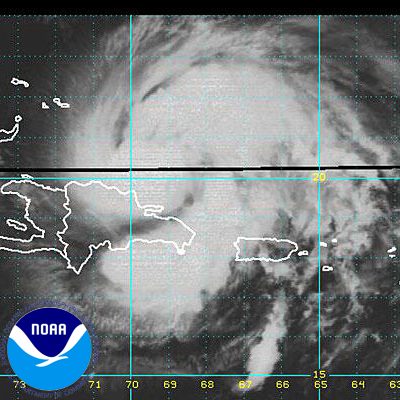 NEWS
NEWS
 NEWS
NEWS
 NEWS
NEWS
![]() Natural disasters have a two-fold effect on infrastructure—and this is especially the case for wireless carriers—first there’s the actual damage caused to fiber, wire, and transmitter towers inflicted by the disaster itself and second there’s the sudden spike in usage by the population. Right now, Hurricane Irene is sailing its merry havoc towards the East Coast and the cell phone networks there are strapping on their helmets and girding their loins.
Natural disasters have a two-fold effect on infrastructure—and this is especially the case for wireless carriers—first there’s the actual damage caused to fiber, wire, and transmitter towers inflicted by the disaster itself and second there’s the sudden spike in usage by the population. Right now, Hurricane Irene is sailing its merry havoc towards the East Coast and the cell phone networks there are strapping on their helmets and girding their loins.
The hurricane is currently a category 3 storm recently passed over the BahamasThursday afternoon and can be seen aimed at North Carolinawhere it’s expected to make landfall Saturday. From there, the storm is expected to take a grand tour of the coast all the way from North Carolinato Maine. FEMA has already warned during an interview yesterday with CNN that people shouldn’t rely on their cell phone during the hurricane landfall and instead look to the public broadcast system, radios, and their TVs.
Marguerite Reardon at CNet News has written up a powerful article on the expected effects of the hurricane on wireless carriers and here’s some of the salient points.
Congestion is a wireless network killer
During a crisis everyone who has some form of communication wants to be in constant contact, as a result call saturation goes way up. Networks often deal with this by delaying outgoing calls and dropping calls that have been going on over certain lengths. The prioritization leads to some customer service snafus, but generally carriers deal with this by offering recompense and condolences to those who suffer from it—but on a sunny say, there’s nothing life-or-death about knowing if your child is at school or safely at home yet.
This is why it’s so important to have disaster plans that permit limiting communication—if not just for the reason that communication itself might be limited by the disaster—as a result, very little communication can lead to effective results and leave the airwaves clear for disaster relief and as many as people as possible to coordinate.
Text messaging is superior to voice to combat congestion and stay in touch
It’s time for social media and the Internet to shine in a crisis. You know how often there’s a story about someone posting on Facebook who really obviously needs medical attention? Well, this is the inverse of that: when everyone else is running around trying to stay in contact: Twitter, Facebook, and SMS suddenly become an extremely useful mode of communication.
It’s more likely for text messages to make it through the network because they use far less resources than a voice call. They’re also shorter, they don’t need to be on time to be timely (a text message can wait a few seconds at a transfer point, voice cannot), they use up much less data bandwith, and they can multicast. This is one of the reasons why England’s government’s decision to talk about cutting off social media and messaging during riots is both dangerous and downright foolish.
If everyone in the household totes around a wireless Internet connected device that can receive notification from Facebook, Twitter, and the like; then it’s probably about time to set up a disaster protocol. Since text communication is quick, easy, and more likely to go through than voice; then it’s about time to think about making use of that. In fact, it could be an import source for moral support and a lifeline for someone hiding out in power-loss darkened house weathering the storm.
Before the storm:
During the storm:
Hurricane cause widespread damage, flooding, blown down power-lines, inaccessible roads, and general mayhem. So, as it approaches be prepared to baton down the hatches, sit in a dark room with the glow of a laptop or TV screen, close friends, and keep your lifelines handy.
Stay dry. Stay safe. Have a good weekend. We’ll be looking for all you East Coast people to come back to us on Monday.
Support our mission to keep content open and free by engaging with theCUBE community. Join theCUBE’s Alumni Trust Network, where technology leaders connect, share intelligence and create opportunities.
Founded by tech visionaries John Furrier and Dave Vellante, SiliconANGLE Media has built a dynamic ecosystem of industry-leading digital media brands that reach 15+ million elite tech professionals. Our new proprietary theCUBE AI Video Cloud is breaking ground in audience interaction, leveraging theCUBEai.com neural network to help technology companies make data-driven decisions and stay at the forefront of industry conversations.